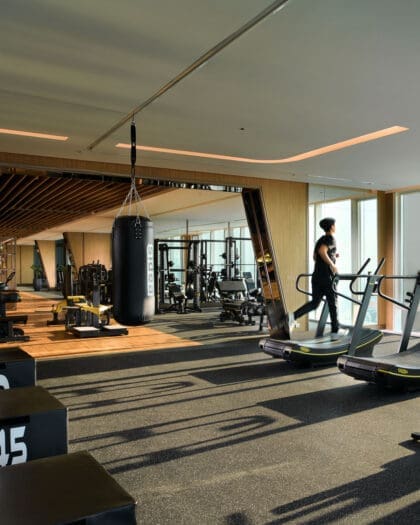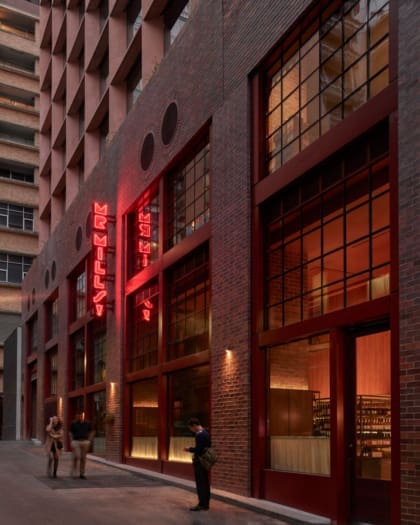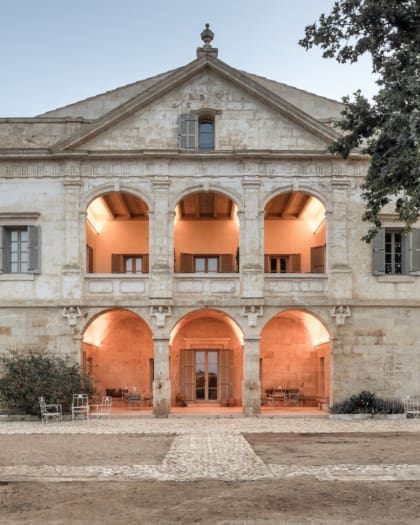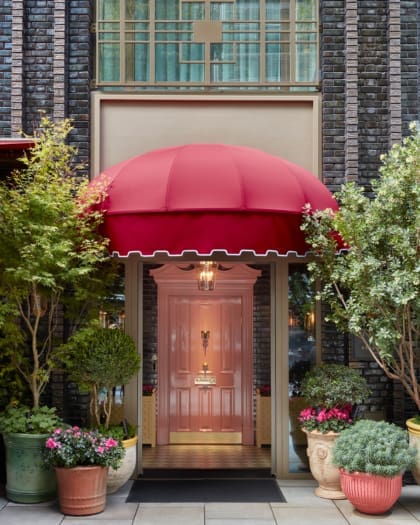
Contemporary art finds a rugged Highlands home at The Fife Arms, Braemar
With the Cairngorms forming a beautiful mountainous backdrop, the founders of Hauser & Wirth have transformed a traditional coaching inn into one of Scotland’s most striking hotel stays
With ominous clouds clearing, I start to get my bearings at the humble summit of Creag Choinnich. Following a short, steep ascent through petrichor and pine-scented forest, I perch by a cairn as the snow-topped southern Cairngorms open in front of me. The peaks of Beinn a’ Bhuird and Ben Avon loom in the distance and the River Dee meanders in the valley below, threading its way past Braemar and its newly whitewashed castle.
During the 19th century, this handsome Aberdeenshire town of 800 residents became a popular destination for upper-class urbanites during the reign of Queen Victoria, whose former royal residence at Balmoral lies just to the east. And while its rugged slopes and natural beauty have always attracted outdoors lovers, the recent revival of a historic hotel means an alternative crowd are now falling in love with Braemar.

Braemar’s new star
Red squirrels skitter overhead as I retrace my steps. I emerge from the forest and pass Braemar’s butchers, chippie and shops touting outdoor gear and antler sculptures before arriving at the Fife Arms – an imposing pile sat by the River Clunie in the heart of town. The former residence of the Earl of Fife had, for a long time, served as a run-down stop-off for passing coach tours, yet a decade ago its potential caught the eye of two of the world’s biggest contemporary art dealers.
Under the ownership of Iwan and Manuela Wirth, the co-founders of Hauser & Wirth, the Fife Arms reopened in 2019 following a dramatic renovation. The latest launch by Artfarm, the duo’s hospitality brand that also oversaw Durslade Farmhouse in Bruton, this former coaching inn has been transformed into a vibrant 46-room destination filled with an eclectic, evolving collage of 16,000 artworks and antiques spanning various styles and eras – including pieces by some of the world’s best known artists.
It all becomes clear at check-in where, beyond the dark wooden panelling and tweed and tartan-clad staff, a neon chandelier fashioned from red deer antlers hangs above the desk, and a custom-bleached, pre-programmed Steinway grand piano plays of its own accord. The first of two Picassos hangs nearby, an angular portrait inscribed with poetry that’s matched only in its impact by a striking carved fireplace depicting scenes from the works of Scottish poet Robert Burns.

Depth and diversity
Having warmed up by the fire, I meet porter and resident historian Shona, whose warm wit and art expertise shines through as we explore the Fife Arms’ constantly surprising communal areas, with each eye-catching piece having a story to tell. Into the drawing room and past the second Picasso – a moody-hued late work modelled on his second wife – we look up at a dazzling, swirling ceiling that was hand painted in earthy tones by Chinese artist Zhang Enli, inspired by the Cairngorms’ quartz rock faces.
We pause in the cocktail bar that takes its cues from surrealist fashion designer Elsa Schiaparelli, who visited Braemar in its heyday. Here, art deco fixtures and photography by Man Ray are accompanied by excellent locally distilled gin and tonics. In the dining room at Clunie’s – where later I’m served Scottish crab and ember-grilled Highlands venison – Argentine muralist Guillermo Kuitca has created a cubist rockscape effect on a grand scale, as Murano chandeliers with fern and thistle motifs hang overhead.
Throughout the hotel, taxidermied beasts of varying origins occupy hanging space with stunning photography of birds in motion, Victorian relics and suits of armour dating to the Jacobite rebellion. Walls are quilted with bespoke tartan by local textile designer Minta Campbell, and – back at the lobby – Shona reveals that the artist behind a striking depiction of a felled stag is, in fact, keen watercolourist Queen Victoria. Rooms, too, each themed after local characters and Scottish history, are distinct in their decor, offsetting traditional Highland touches with opulent woollen textures and conversation-worthy artworks – plus a decanter of whisky to ward off any winter chill.

Into the wild
Yet for all the Fife Arms’ eloquent curation of international influences, Braemar’s untamed wilderness awaits. After beginning my day with a breakfast of porridge with poached plums and strong black coffee – overlooked by a peasant scene by Flemish renaissance painter Pieter Brueghel the Younger – I meet the merino-clad Annie Armstrong of Wild Braemar, which offers nature-led experiences to guests. “I have watched the landscape here grow and change throughout my life so I feel a deep connection to it, as if it’s a lifelong friend,” she says as we hike through regenerating forest in the Linn of Dee, the UK’s largest nature reserve and home to some of the last remaining fragments of the ancient Caledonian pine forest. “Year on year you can visit and see the landscape change and grow as we try to restore and enrich the ecosystems.”
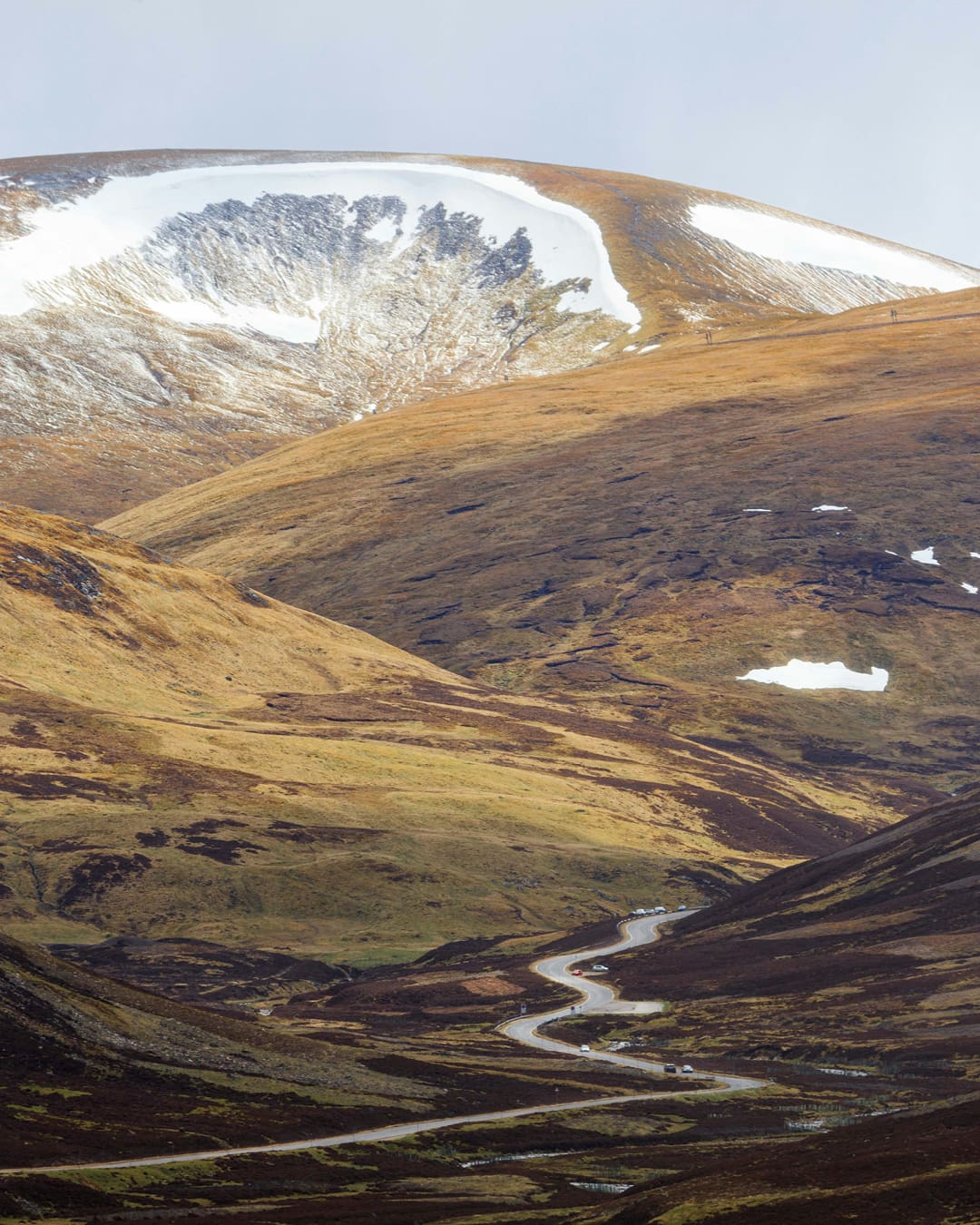
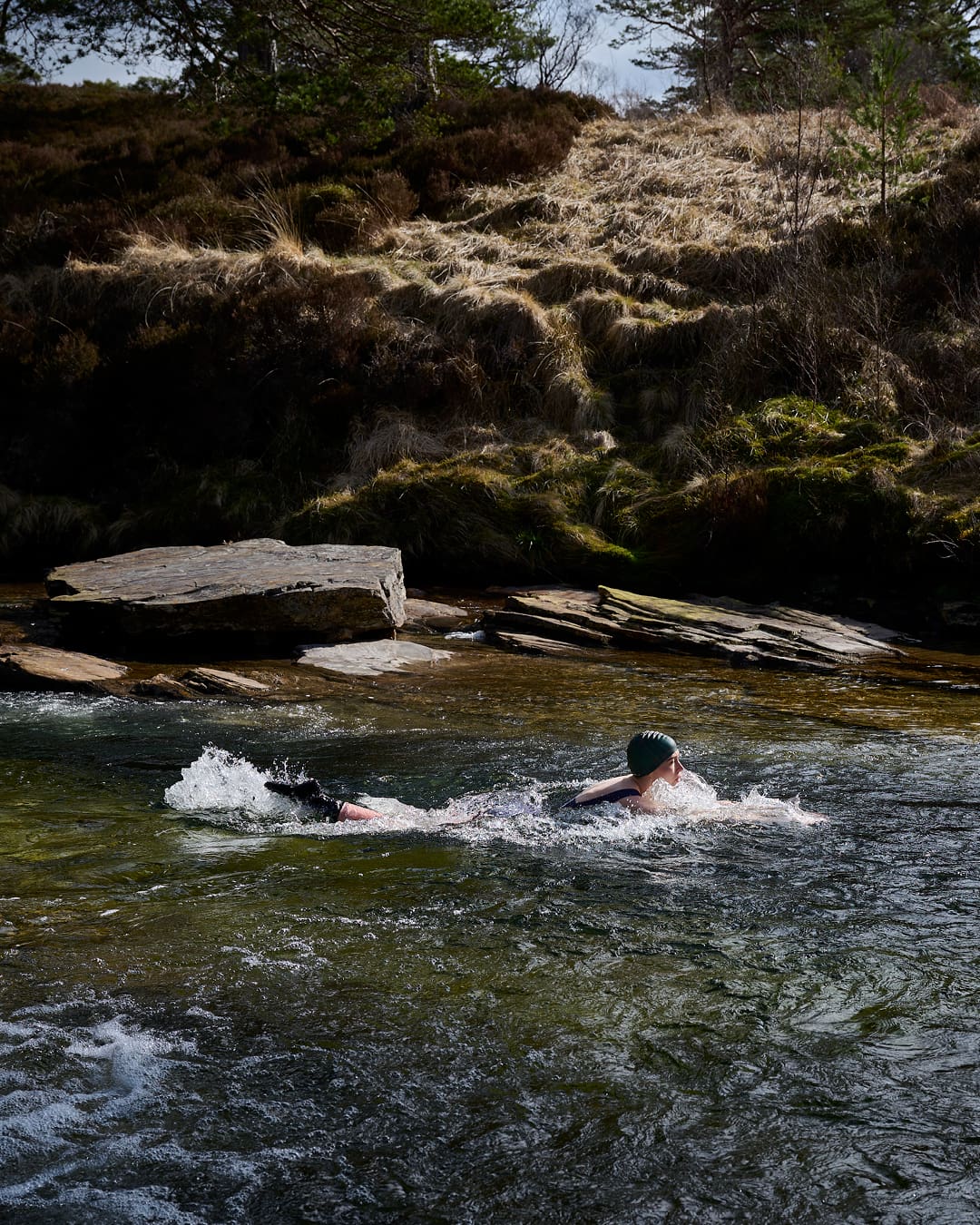
The autumnal reds, oranges and yellows of the rowan, birch and aspen dazzle between the pines as the peat-tinged Lui Water courses past, swelled by recent rainfall. “By limiting the number of deer, native species are able to thrive,” says Armstrong, pointing to examples of mature trees that would’ve previously been nibbled in their infancy “I adore being acutely in tune with the seasons – each has its own palette, plants, wildlife and weather systems.”
We dive into the bracing confluence of two streams, the shock of its autumnal chill temporarily quelling further questions on flora and fauna. Here, we spend a few minutes submerged in its fast-moving waters before retreating to Armstrong’s riverside sauna in a converted horsebox. Wild swimming is just one of the activities Armstrong offers to guests, her deep knowledge of Braemar’s lesser-known landscapes helping guests forge closer connections with nature. As a pair of gamekeepers stalking roe deer pass by, Armstrong explains the metabolism and circulation-boosting benefits of cold-water immersion, which helps explain my newfound euphoria as we make our way back to Braemar.
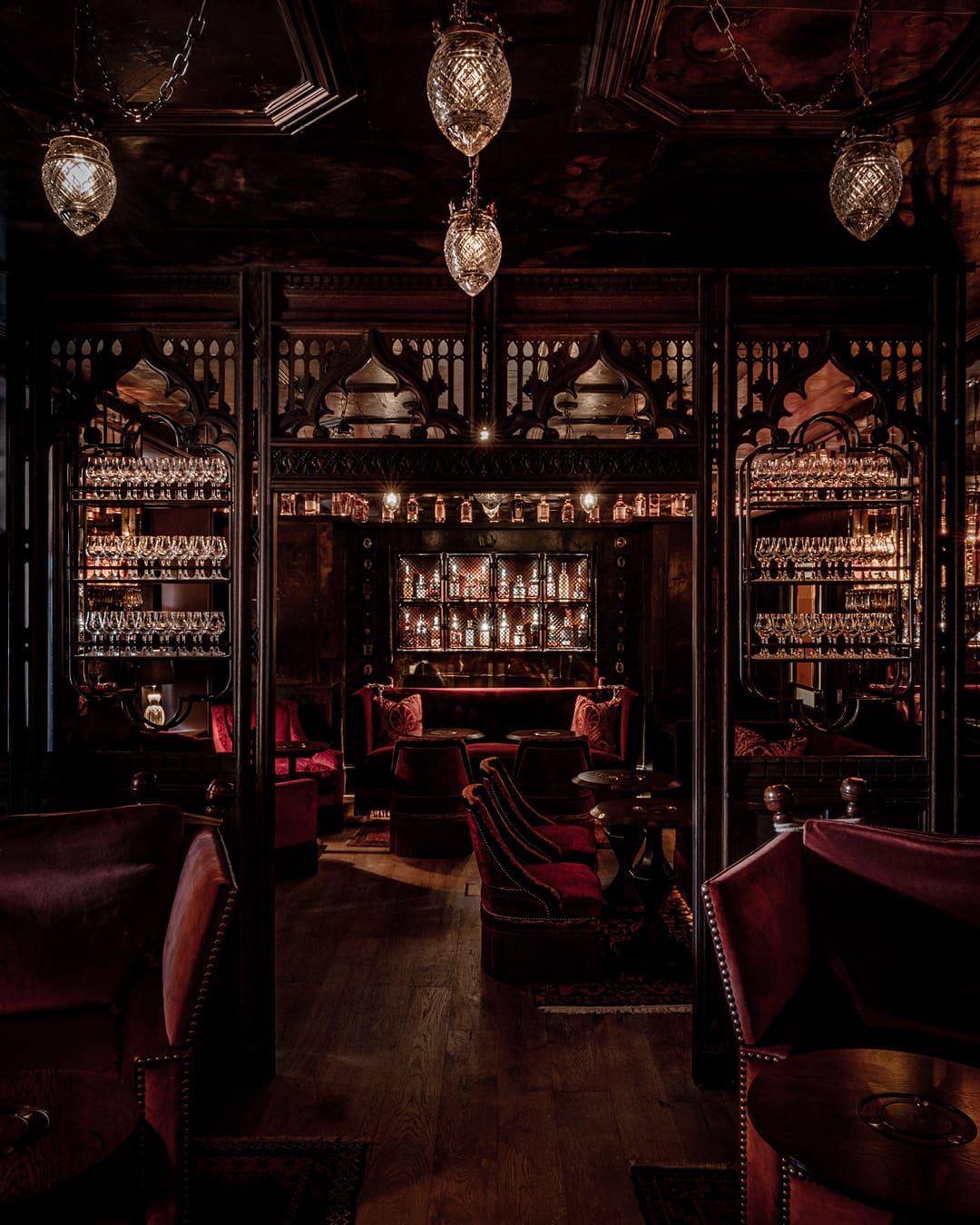
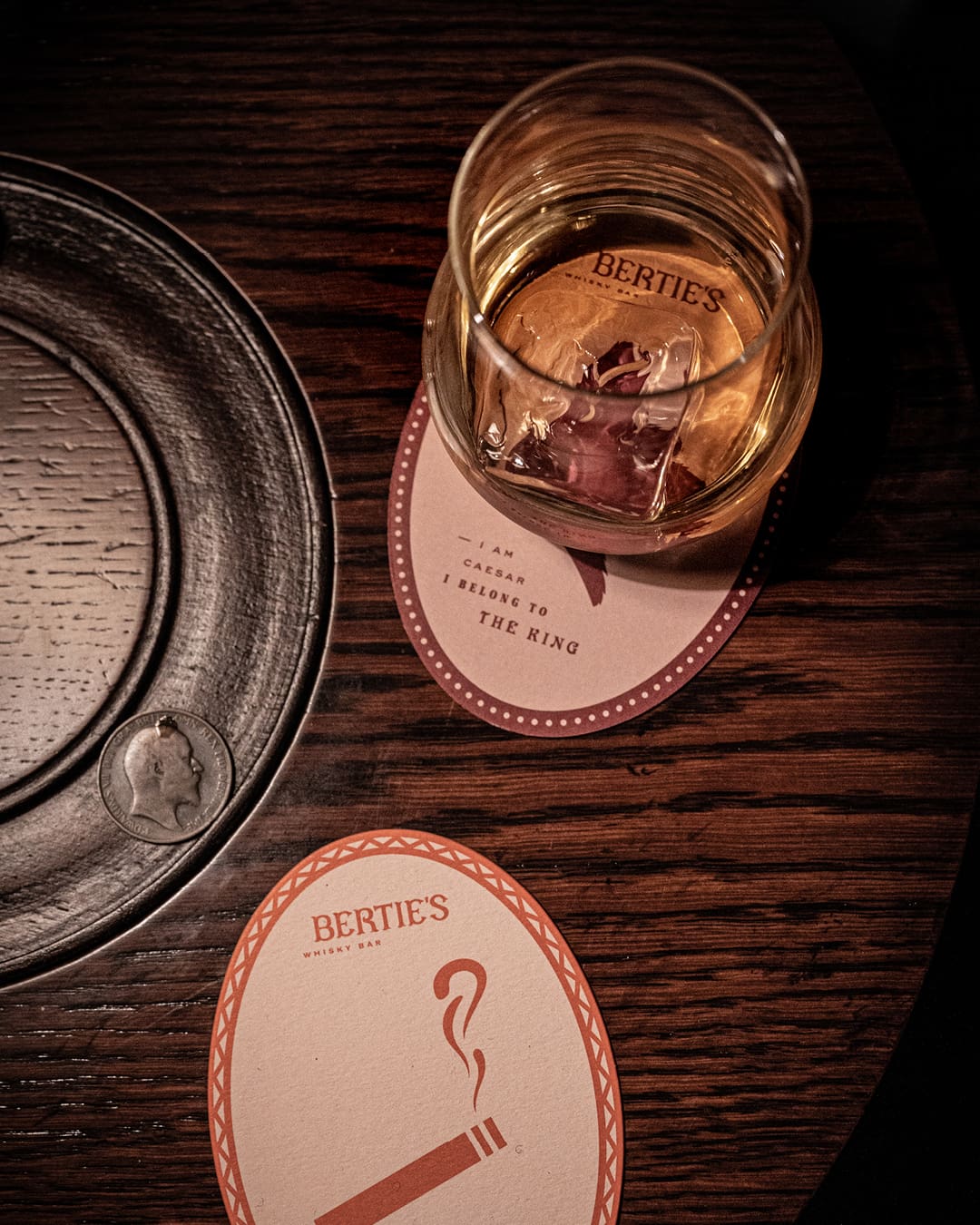
Distinguished drams
Back in the opulent, low-lit Berties Bar, whose walls are lined with close to 500 whiskies, I take my seat for a tasting as our whisky ‘sommelier’ highlights how the drink provides an accurate reflection of place, as we nose, swirl and sample a selection ranging from the fragrant to the smoky. “Some people regard these whiskies as art and each is made by distillers creating something from nature,” he says. “Just sometimes, when the conditions are right, they create something that you’ll remember forever.”
Later, commenting on the divisive nature of heavily peated whiskies, he’ll refer to the importance of integration, adding how smoky drams are at their best when those phenolic notes are wrapped up smoothly with all other elements. The same could apply to the Fife Arms as a whole – the owners’ skilful integration of the opulent, the outlandish and the outdoors – shot through with a warm sense of Highlands hospitality – succeeding in creating a thrilling stay that feels truly unique.
For more of our favourite boutique hotels, remote boltholes and designer digs across the world, visit our Hotel Hub.

